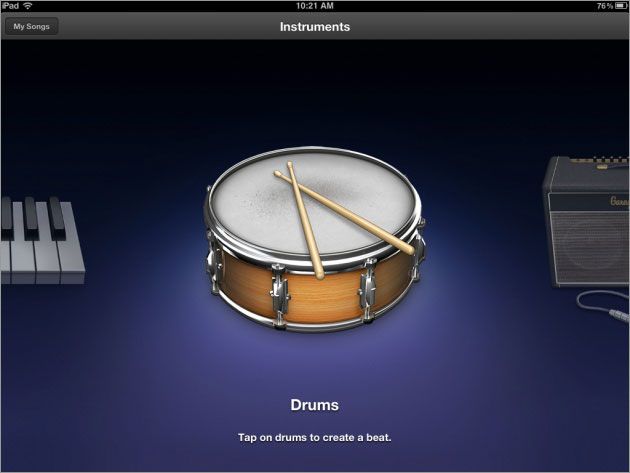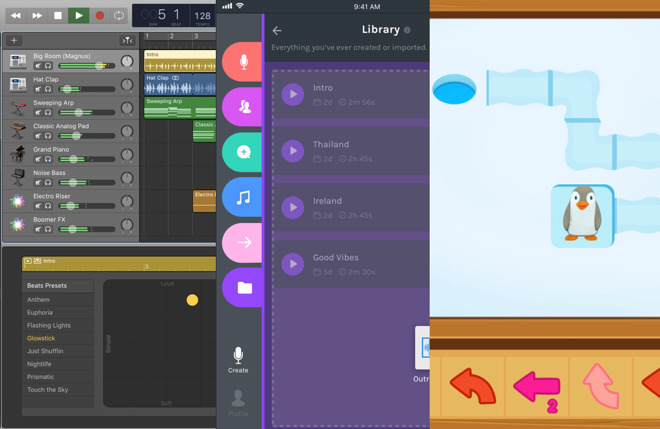
Battery life is great, too obviously, the amount of power used depends on what you’re doing with the laptop, but we were certainly plugging into the power far less frequently than with our Intel-powered MacBook Pro. You’ll have a powerful, good-looking laptop that offers pretty stunning performance.
#Review garageband for mac pro
So, where does that leave us? If you’re buying your first music computer and plan to start by using either Logic or GarageBand with its stock instruments and effects then the 13-inch M1 MacBook Pro would be an excellent purchase. What would be nice would be the option to use iOS AUv3s as plugins in the desktop versions of Logic Pro and GarageBand What’s more, using these touch-optimised apps isn’t a particularly satisfying experience - you can’t resize the windows, for example - so it’s all slightly underwhelming.
#Review garageband for mac mac
It’s also worth mentioning that M1 Macs can run iOS apps, too, though we noticed that a lot of our favourite music-making apps aren’t available on the Mac App Store. It's not portable, obviously, but you do have the bonus of a couple of extra USB ports for peripherals. Prices start at just $699/£699, though you'll probably want to increase your RAM and storage. If you want a desktop M1 Mac, the mini looks like a bit of a bargain. The main differences are that it doesn't have a fan or a Touch Bar, but that might not bother you too much.


The entry-level M1 MacBook offers very similar performance to the MacBook Pro but is a fair bit cheaper.
#Review garageband for mac software
On the plus side, the Rosetta user experience is seamless: once you have it installed on your Mac, software that requires it is automatically translated - you don’t even notice that it’s happening. Here, performance is less impressive - though certainly not inadequate - which is what you’d expect. What all of this confirms is that Logic Pro runs great on the M1, but what about third-party plugins? Officially, only a handful are supported at this stage, though it is possible to run certain (though not all) effects and instruments via Rosetta. The 8-core M1 Mac Mini was marginally more impressive in this test, too (109 tracks). What is slightly surprising, though, is that the 8-core M1 MacBook Air - a slightly cheaper computer - scored 110 tracks in the Music-Prod test (again, we got the same result) - a few more than its Pro sibling. Given that the M1 is Apple’s first and entry-level chip - and the one that sits in its most affordable computers - we’d say that this is pretty impressive, and confirms that the 13-inch M1 MacBook Pro is well up to the job of music production. This indicates that it has similar performance to the 2019 16-inch MacBook Pro with a 2.4GHz Intel Core i9 processor, and sits only just behind the 2020 27-inch iMac with a 6-core 3.3GHz Intel Core i5 processor. In our test, the 13-inch M1 MacBook Pro with 16GB RAM managed to play back 106 tracks before the system overloaded - the same as is reported on the Music-Prod website. The 13-inch M1 MacBook Pro is well up to the job of music production. The idea is that you play the project then keeping turning tracks on until the Mac falls over. This contains 128 duplicated tracks each of these contains Logic’s Sculpture synth and five effects playing a pretty hefty chord. To give you some idea of what you can expect, we downloaded the Logic Benchmark test project from Music-Prod, which has been used to assess the performance of a wide range of Macs.


Project load times feel ridiculously fast - in fact, this Mac feels super-responsive whatever you happen to be doing with it - and if you’re using the built-in instruments and effects, you can just keep stacking them up without any fear of CPU overload. The good news is that Apple’s two DAWs - Logic Pro and GarageBand - are both Universal, and if you run one of these applications on the M1 MacBook Pro, the experience is great. It’s not ideal, but an inevitable byproduct of such a big hardware transition. For software to run natively on M1 machines, it needs to be updated to Universal status (which means that it also remains fully compatible with Intel machines), and there’s no getting away from the fact that, right now, most music software hasn’t been updated.Īpple’s solution is Rosetta, a technology that enables Intel-only apps to run on M1 machines, albeit not with quite the same level of performance.


 0 kommentar(er)
0 kommentar(er)
